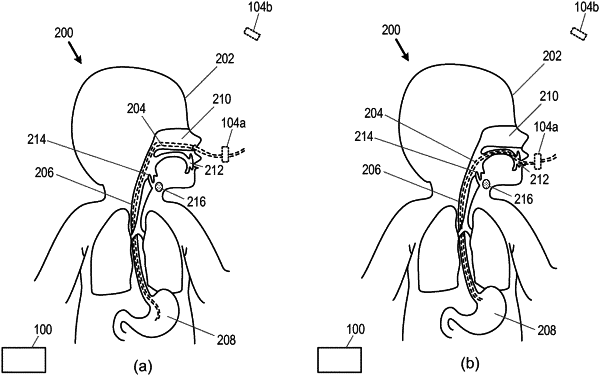| CPC A61B 5/4205 (2013.01) [A61B 5/687 (2013.01); A61B 5/6847 (2013.01); A61B 5/7264 (2013.01); G06N 3/044 (2023.01); G16H 40/67 (2018.01); A61B 2562/0219 (2013.01)] | 11 Claims |

|
1. An apparatus for monitoring swallowing in a subject, comprising:
a feeding tube structured and configured to be placed in the esophagus of the subject;
a motion sensor structured and configured to acquire motion signals from the feeding tube when the feeding tube is placed in the esophagus of the subject, wherein the motion signals are indicative of swallowing motions of the subject transmitted along the feeding tube; and
a processor configured to:
acquire the motion signals from the motion sensor;
extract one or more features indicative of swallowing activities from the acquired motion signals;
decompose the acquired motion signals into a plurality of different segments based on the one or more extracted features; and
process the plurality of different segments to classify the acquired motion signals as indicative of the subject swallowing healthily or unhealthily.
|